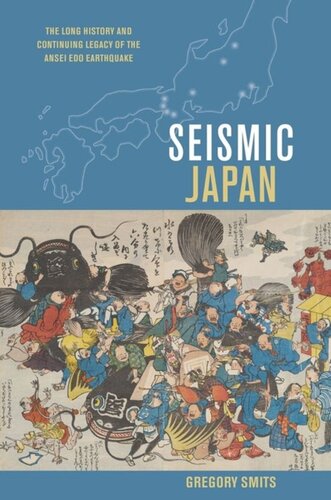

Most ebook files are in PDF format, so you can easily read them using various software such as Foxit Reader or directly on the Google Chrome browser.
Some ebook files are released by publishers in other formats such as .awz, .mobi, .epub, .fb2, etc. You may need to install specific software to read these formats on mobile/PC, such as Calibre.
Please read the tutorial at this link: https://ebookbell.com/faq
We offer FREE conversion to the popular formats you request; however, this may take some time. Therefore, right after payment, please email us, and we will try to provide the service as quickly as possible.
For some exceptional file formats or broken links (if any), please refrain from opening any disputes. Instead, email us first, and we will try to assist within a maximum of 6 hours.
EbookBell Team

0.0
0 reviewsWhat are we to make of contemporary newspapers in Japan speculating about the possible connection between aquatic creatures and earthquakes? Of a city council deciding to issue evacuation advice based on observed animal behavior? Why, between 1977 and 1993, did Japan’s government spend taxpayer money to observe catfish in aquariums as part of its mandate to fund earthquake prediction research? All of these actions are direct legacies of the 1855 Ansei Edo earthquake, one of the major natural disasters of the period. In his investigation of the science, politics, and lore of seismic events in Japan, Gregory Smits examines this earthquake in a broad historical context.
The Ansei Edo earthquake shook the shogun’s capital during a year of special religious significance and at a time of particularly vigorous seismic activity. It was also a turning point because, according to the prevailing understanding of earthquakes at the time, it should never have happened. Many Japanese, therefore, became receptive to new ideas about the causes of earthquakes as well as to the notion that by observing some phenomena—for example, the behavior of catfish—one might determine when an earthquake would strike. All subsequent major earthquakes in Japan resulted in claims, always made after the fact, that certain phenomena had been signs of the impending catastrophe. Indeed, earthquake prediction in Japan from 1855 to the present has largely consisted of amassing collections of alleged or possible precursor phenomena. In addition, the Ansei Edo earthquake served as a catalyst accelerating socio-political trends already underway. It revealed bakufu military weaknesses and enhanced the prestige of the imperial deity Amaterasu at the expense of the bakufu deity Kashima.
Anyone interested in Japan, earthquakes, and natural disasters will benefit from Seismic Japan. The work also serves as essential background for understanding the peculiar history of earthquake prediction in modern and contemporary Japan.